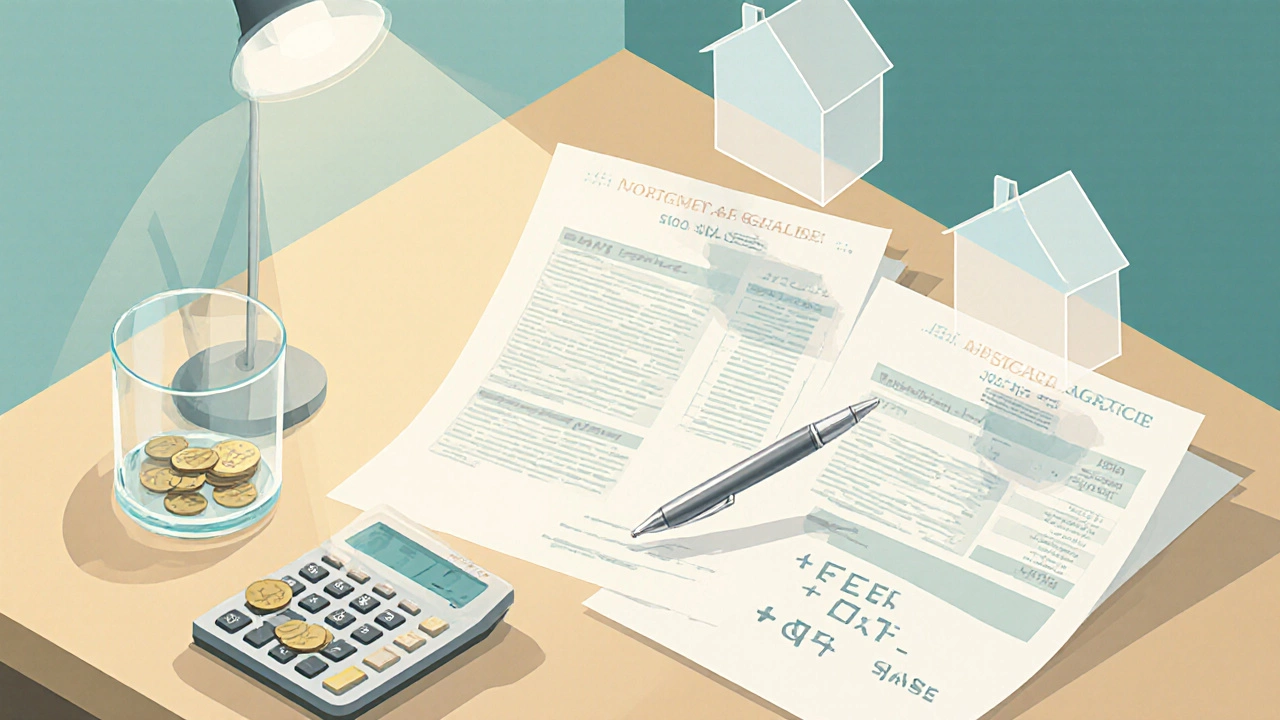When to Remortgage: Key Signs It’s Time to Refinance Your Mortgage
 Oct, 24 2025
Oct, 24 2025
Remortgage Calculator
When to Consider Remortgaging
Use this calculator to determine if refinancing your mortgage makes financial sense based on your current situation and potential new rates.
Typically worth it when:
- Rate drops of 0.5-1.0% or more
- Break-even point within 12-24 months
- At least 20% home equity
Quick Takeaways
- Remortgaging makes sense when rates drop at least 0.5‑1.0% below your current rate.
- Having 20‑30% equity gives you better loan‑to‑value (LTV) options and lower fees.
- A cash‑out remortgage can fund renovations, debt consolidation, or an emergency fund.
- Calculate the break‑even point: total savings must outweigh closing costs and any penalties.
- Check your credit score, LTV, and mortgage term before you apply.
What is a remortgage?
When you remortgage is a process of replacing your existing home loan with a new one, often from a different lender or with different terms. In Canada, the term is used interchangeably with “refinance.” The goal is usually to secure a lower interest rate, change the mortgage type, or tap into home equity for cash.
Top signals that it’s time to consider a remortgage
Not every rate dip means you should rush to the bank. Look for these concrete triggers:
- Interest rates have fallen significantly. If the national average mortgage rate is at least 0.5‑1.0% lower than your current rate, the savings can be substantial.
- You’ve built up home equity - typically 20‑30% of your property’s current market value.
- You want to switch from a variable‑rate mortgage to a fixed‑rate mortgage (or vice‑versa) to match your risk tolerance.
- You need cash for renovations, debt consolidation, or a major purchase, and a cash‑out option makes sense.
- Your current mortgage has a high penalty for early repayment, but the new loan offers a lower rate that outweighs the penalty.

How to evaluate if remortgaging will save you money
Run the numbers before you sign any paperwork. Here’s a quick framework:
- Gather your current mortgage details: outstanding balance, interest rate, remaining term, and any pre‑payment penalties.
- Get at least three fresh quotes. Note the new rate, term length, and any fees (appraisal, legal, registration).
- Calculate the total cost of the new loan over the chosen term. Include closing costs such as appraisal fees (≈ $400‑$700), legal fees (≈ $1,000), and possible lender‑originated fees.
- Subtract any early‑repayment penalty from your current lender.
- Determine the monthly payment difference and the cumulative savings.
- Identify the break‑even point - the month when cumulative savings exceed total costs.
If you’ll recoup the costs within 12‑24 months, the remortgage is generally worth it.
Key factors to review before you apply
Even a perfect rate can be derailed by overlooked details. Keep an eye on these five pillars:
- Credit score - A score of 720+ usually unlocks the best rates. If yours is lower, consider improving it first.
- Loan‑to‑value ratio (LTV) - LTV = outstanding loan ÷ property value. LTV under 80% gets you better pricing and fewer fees.
- Mortgage term length - Shorter terms (e.g., 15‑years) have higher monthly payments but lower total interest.
- Type of mortgage - Fixed‑rate offers payment certainty; variable‑rate can be cheaper if rates stay low.
- Potential penalties - Some lenders charge a “break‑fee” if you leave before the term ends. Verify the exact amount.
Fixed‑rate vs. Variable‑rate: Quick comparison
| Feature | Fixed‑rate Mortgage | Variable‑rate Mortgage |
|---|---|---|
| Payment predictability | Same payment for whole term | Payments can change with market rates |
| Typical interest rate (2025 Canada) | 5.25% (5‑year term) | Prime + 0.25% ≈ 5.00% |
| Best for | Risk‑averse borrowers, long‑term planners | Borrowers comfortable with rate fluctuations, looking to save if rates drop |
| Early‑repayment penalty | Often higher (interest rate differential) | Usually lower or none |
| Potential to refinance later | May need to break the contract | Usually easier to switch |

Common pitfalls and how to avoid them
Even seasoned homeowners slip up. Spot these traps early:
- Chasing the lowest rate without considering fees. A 0.2% lower rate isn’t a win if closing costs are $5,000 higher.
- Ignoring the impact of a longer amortization period. Extending from 25 to 30 years reduces monthly payment but raises total interest.
- Missing the “cash‑out” limit. In Canada, you can typically borrow up to 80% of your home’s value - exceeding this can trigger higher rates or denial.
- Failing to lock in the rate. Mortgage rates can shift daily; a rate lock protects you during the approval window.
- Over‑estimating future income. Lenders assess debt‑to‑income ratio; a projected raise that never materializes could affect approval.
Step‑by‑step guide to remortgaging in Toronto (2025)
- Check your credit report. Obtain your Equifax and TransUnion scores. Dispute any errors before applying.
- Estimate your home’s market value. Use recent comparable sales (CMA) or hire an appraiser.
- Calculate your LTV. Divide the loan amount you want by the estimated value. Aim for ≤80%.
- Shop around. Contact at least three lenders - big banks, credit unions, and online mortgage brokers.
- Ask for a full cost estimate. Get a “quoted closing cost” breakdown that includes appraisal, legal, and registration fees.
- Negotiate the penalty. Some lenders will waive the early‑repayment fee if you have a good relationship or a high credit score.
- Secure a rate lock. Typically 30‑60 days; confirm the lock period in writing.
- Submit documentation. Provide proof of income, tax returns, property deed, and existing mortgage details.
- Review the Offer to Settle. This legal document spells out the new loan terms, fees, and any conditions.
- Close the deal. Your lawyer or notary will finalize the transfer, register the new mortgage, and release any funds for cash‑out.
From start to finish, the process usually takes 4‑6 weeks if you have all paperwork ready.
Mini FAQ
When is it worth remortgaging?
It’s worth it when the new rate is at least 0.5‑1.0% lower than your current rate and the break‑even point occurs within two years after accounting for all fees and penalties.
Can I remortgage if I have a variable‑rate mortgage?
Yes. Switching to a fixed‑rate can provide payment stability, while moving to another variable product might lower your rate if the prime has dropped.
What is the typical cash‑out limit in Canada?
Most lenders allow you to borrow up to 80% of your home’s appraised value. If your house is worth $800,000 and you owe $400,000, you could potentially cash‑out up to $240,000.
How do closing costs affect my decision?
Closing costs typically range from 1%‑2% of the loan amount. If the total savings from a lower rate don’t exceed these costs within a reasonable time, the remortgage may not be profitable.
Should I wait for rates to drop further?
If rates are already near historic lows and you have a solid LTV, waiting could be risky. Rates can rise quickly, and you might miss the current favorable window.
